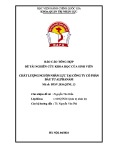
van Tienen et al. Retrovirology 2010, 7:50
http://www.retrovirology.com/content/7/1/50
Open Access
RESEARCH
© 2010 Tienen et al; licensee BioMed Central Ltd. This is an Open Access article distributed under the terms of the Creative Commons
Attribution License (http://creativecommons.org/licenses/by/2.0), which permits unrestricted use, distribution, and reproduction in
any medium, provided the original work is properly cited.
Research
HTLV-1 in rural Guinea-Bissau: prevalence,
incidence and a continued association with HIV
between 1990 and 2007
Carla van Tienen*
1
, Maarten F Schim van der Loeff
2
, Ingrid Peterson
1
, Matthew Cotten
1
, Birgitta Holmgren
3
,
Sören Andersson
4
, Tim Vincent
1
, Ramu Sarge-Njie
1
, Sarah Rowland-Jones
5
, Assan Jaye
1
, Peter Aaby
6
and
Hilton Whittle
1
Abstract
Background: HTLV-1 is endemic in Guinea-Bissau, and the highest prevalence in the adult population (5.2%) was
observed in a rural area, Caió, in 1990. HIV-1 and HIV-2 are both prevalent in this area as well. Cross-sectional
associations have been reported for HTLV-1 with HIV infection, but the trends in prevalence of HTLV-1 and HIV
associations are largely unknown, especially in Sub Saharan Africa. In the current study, data from three cross-sectional
community surveys performed in 1990, 1997 and 2007, were used to assess changes in HTLV-1 prevalence, incidence
and its associations with HIV-1 and HIV-2 and potential risk factors.
Results: HTLV-1 prevalence was 5.2% in 1990, 5.9% in 1997 and 4.6% in 2007. Prevalence was higher among women
than men in all 3 surveys and increased with age. The Odds Ratio (OR) of being infected with HTLV-1 was significantly
higher for HIV positive subjects in all surveys after adjustment for potential confounding factors. The risk of HTLV-1
infection was higher in subjects with an HTLV-1 positive mother versus an uninfected mother (OR 4.6, CI 2.6-8.0). The
HTLV-1 incidence was stable between 1990-1997 (Incidence Rate (IR) 1.8/1,000 pyo) and 1997-2007 (IR 1.6/1,000 pyo)
(Incidence Rate Ratio (IRR) 0.9, CI 0.4-1.7). The incidence of HTLV-1 among HIV-positive individuals was higher
compared to HIV negative individuals (IRR 2.5, CI 1.0-6.2), while the HIV incidence did not differ by HTLV-1 status (IRR 1.2,
CI 0.5-2.7).
Conclusions: To our knowledge, this is the largest community based study that has reported on HTLV-1 prevalence
and associations with HIV. HTLV-1 is endemic in this rural community in West Africa with a stable incidence and a high
prevalence. The prevalence increases with age and is higher in women than men. HTLV-1 infection is associated with
HIV infection, and longitudinal data indicate HIV infection may be a risk factor for acquiring HTLV-1, but not vice versa.
Mother to child transmission is likely to contribute to the epidemic.
Background
Human T-cell Lymphotropic Virus type 1 (HTLV-1) is the
first retrovirus linked to human disease and was isolated
for the first time in 1979 [1]. HTLV-1 is an ancient infec-
tion and certain subtypes may have been present in
humans for > 5,300 years [2]. Although HTLV-1 has
spread worldwide, it is only endemic in distinct regions
including south-western Japan, the Caribbean and coun-
tries from Sub-Saharan Africa [3]. HTLV-1 causes adult
T-cell leukemia (ATL) and tropical spastic paresis (also
called HTLV-1 associated myelopathy) (TSP/HAM) in up
to 5% of infected individuals which can lead to prolonged
morbidity (TSP/HAM) and death (ATL). HTLV-1 is also
associated with other inflammatory syndromes such as
uveitis and infective dermatitis [4,5]. Infectious complica-
tions such as tuberculosis have also been reported to be
higher in HTLV-1 infected compared to uninfected indi-
viduals [6,7]. Although the majority of infected individu-
als are lifelong asymptomatic carriers, increased
mortality has been observed in HTLV-1 infected individ-
* Correspondence: cvantienen@mrc.gm
1 Medical Research Council, Fajara, The Gambia
Full list of author information is available at the end of the article

van Tienen et al. Retrovirology 2010, 7:50
http://www.retrovirology.com/content/7/1/50
Page 2 of 9
uals compared to non-infected individuals in community
studies [8-12].
The routes of transmission of HTLV-1 are: mother-to-
child transmission (especially prolonged breast feeding),
sexual intercourse, blood transfusion and sharing of nee-
dles and syringes [13]. HTLV-1 prevalence typically
increases with age and is higher in women than men, a
pattern that is similar to that of HIV-2 but different from
HIV-1. It remains unclear what effect HTLV-1 has on dis-
ease progression in HIV-1 and HIV-2 [14,15]. Despite the
shared routes of transmission, the prevalence of HTLV-1
may decrease while that of HIV-1 increases within the
same population [16,17]. Studies have shown HIV-1 prev-
alence is increasing and HIV-2 prevalence is decreasing
in many countries in West Africa [18-24], but trends in
HTLV-1 prevalence are largely unknown.
HTLV-1 is endemic in Guinea-Bissau, and the highest
prevalence in the adult population was 5.2% in 1990 in
Caió, the rural area studied in this paper [25]. The trends
of HTLV-1 prevalence and incidence, factors associated
with HTLV-1 infection, and associations with HIV-1 and
HIV-2 in this area between 1990 and 2007 were deter-
mined.
Results
Participation in the three surveys
In the 2007 survey, 2895 people participated out of the
3907 adults that were registered in the census [26]. This
coverage of 74.1% was similar to previous surveys: 2770
of 3775 (73.4%) registered adults participated in 1990 [27]
and 3110 out of 4127 registered adults (75.4%) partici-
pated in 1997. In all three surveys more women partici-
pated than men, which reflects the imbalance in the men-
women ratio in the census registrations, caused by men
migrating out of the area [27,28]. In 1997, 49% of non-
participants were women compared to 61% of partici-
pants (p < 0.001); the median age of non-participants (30
years) was lower than that of participants (33 years; p =
0.002). In 2007, 54% of non-participants were women
compared to 60% of participants (p = 0.001), while the
median age did not differ between the groups (both 31
years; p = 0.23).The main reason for non-participation in
all surveys was short-term travel (< 6 months). Refusal to
give a blood sample was the second cause for non-partici-
pation, and this declined from 8.7% in 1997 to 5.0% (p <
0.001) in 2007 and was similar for both sexes [26].
HTLV-1 prevalence
The HTLV-1 prevalence was 5.2% (adjusted: 5.5%) in
1990, went up to 5.9% (adjusted: 5.9%) in 1997 (preva-
lence ratio [PR] 1997 vs. 1990: 1.12, 95% confidence inter-
val [CI] 0.90-1.40) and decreased to 4.6% in 2007 (PR
2007 vs. 1997: 0.78, CI 0.62-0.97). Seven samples in 1997
and 10 samples in 2007 were indeterminate (ELISA posi-
tive and PCR negative). The prevalence increased with
age for both sexes in all three surveys (score test for trend
p < 0.001 for all surveys). Women had a higher prevalence
than men in all three surveys (5.8% vs. 4.2% in 1990, p =
0.08; 7.3% vs. 3.6% in 1997, p < 0.001; 5.5% vs. 3.1% in
2007, p = 0.002). The sex-specific prevalence varied by
age (test for interaction, p = 0.006 in 1990, p = 0.09 in
1997 and p = 0.004 in 2007).
In men, the prevalence peaked in the age group 55-64
years in 1990 (6.3%) and 1997 (10.8%) and peaked in the
oldest age group (65 + years) in 2007 (11.5%) (Figure 1,
Additional file 1). In women, the highest prevalence was
observed in the oldest age groups in 1990 (11.6%) and
1997 (15.3%) and in the 55-64 years group in 2007 (14.5%;
Figure 1, Additional file 1).
Factors associated with HTLV-1 infection
The univariate ORs for HTLV-1 infection in 1997 are
shown in Additional file 1. For men, in the multivariable
model only HIV infection (odds ratio [OR] 2.8, CI 1.3-6.2)
and age ≥ 45 years (OR 2.9, CI 1.5-5.6) remained signifi-
cant. For women, in the multivariable analysis, age ≥ 45
years (OR 2.8, CI 1.8-4.5), HIV infection (OR 4.2, CI 2.7-
6.4), being widowed (OR 2.4, CI 1.0-5.6) or divorced (OR
3.1, CI 1.1-9.0) and living in the central area of the village
(OR 2.7, CI 1.6-4.3) remained significant.
Figure 1 HTLV-1 prevalence by age and survey year (1990, 1997
and 2007) in men and women in Caió, Guinea-Bissau. Bars repre-
sent 95% confidence intervals; the 1990 figures differ slightly from the
figures in B. Holmgren et al., JAIDS 2003, due to use of a different age
variable.

van Tienen et al. Retrovirology 2010, 7:50
http://www.retrovirology.com/content/7/1/50
Page 3 of 9
The univariate ORs for HTLV-1 infection in 2007 are
shown in Additional file 1. For men, in the multivariable
analysis, TPHA positivity (OR 3.1, CI 1.3-7.2) remained
significant and being widowed (OR 6.3, CI 1.3-29.1; p =
0.08) borderline significant; however HIV status (OR 1.2,
CI 0.3-4.0; p = 0.8) and older age (OR 1.1, CI 0.4-2.8; p =
0.8) were no longer associated with HTLV-1 infection.
For women, in the multivariable analysis only older age
(OR 3.3, CI 2.2-5.2) and HIV infection (OR 2.4, CI 1.4-
4.1) were significantly associated with HTLV-1 infection.
HTLV-1 prevalence in mothers and their adult children
HTLV-1 prevalence among study subjects whose mother
participated in the same survey round was determined. In
1990, the HTLV-1 prevalence among subjects with a
HTLV-positive mother was 9.3% (4/43) versus 3.2% (18/
571) among subjects with a HTLV-negative mother (p =
0.04). In 1997, this was 13.7% (14/102) vs. 2.5% (21/832)
(p < 0.001) and in 2007 this was 8.3% (5/60) vs. 2.4% (21/
876) (p < 0.001). The OR of HTLV-1 infection among
subjects with an HTLV-1 infected mother compared to
those with an HTLV-1 negative mother was 4.6 (CI 2.6-
8.1, p < 0.001). When HIV status was added to this model
as a possible confounder, the OR was 4.5 (CI 2.5-7.8). The
OR was higher among subjects aged 15-44 (OR 5.5, CI
3.1-9.9) than among subjects older than 44 (OR 1.5, CI
0.3-7.6).
HTLV-1 incidence
Of the 2501 subjects with a confirmed HTLV status in the
1990 survey, 1306 (52%) provided a blood sample in the
1997 survey. Reasons why a second blood sample was not
obtained (n = 1195) were: death (267; 22.3%), migration
(479; 40.1%), short-term absence (184; 15.4), refusal (115;
9.6%), insufficient sample (56; 4.7%), no re-identification
possible (51; 4.3%) and missing data (43; 3.6%).
Of the 2967 people with a confirmed HTLV status in
the 1997 survey, 1308 (44%) provided a sample in 2007.
Reasons why a second blood sample was not obtained (n
= 1659) were: death (502; 30.3%), migration (690; 41.6%),
short-term absence (360; 21.7%), refusal (77; 4.6%), no re-
identification possible (26; 1.6%) and missing data (4;
0.2%).
In the first period (1990-1997), 402 men and 833
women were HTLV-1 negative at baseline. Sixteen people
became newly infected with HTLV-1 giving an incidence
rate (IR) of 1.8/1,000 person-years-of-observation [PYO]
(CI 1.1-2.9) (Table 1). In the second period (1997-2007),
436 men and 812 women were HTLV-1 negative at base-
line. Eighteen people acquired HTLV-1 infection giving
an incidence rate of 1.6/1,000 PYO (CI 1.0-2.5). The IR
remained stable (incidence rate ratio [IRR], comparing
second vs. the first period, 0.9, CI 0.4-1.7), although there
were differences between the sexes and age groups (inter-
action period and age, p = 0.7; interaction period and sex,
p = 0.2).
HTLV-1 and HIV incidence by retroviral status
In total, data from 835 men and 1512 women were avail-
able for analysis (Table 2). Six people acquired HTLV-1
among 260 people that were HIV infected at baseline (IR
4.6, CI 2.1-10.3). Among the 1974 subjects that were HIV
negative at baseline, 29 people became HTLV-1 infected
(IR 1.6, CI 1.1-2.2). The IRR, adjusted for sex and age, was
2.5 (CI 1.0-6.2) (p = 0.07).
Six people became HIV infected among 98 HTLV-1
positive subjects (IR 9.7, CI 4.3-21.5). Among 2047
HTLV-1 negative people, 141 subjects became newly
infected with HIV (IR 7.7, CI 6.5-9.1). The IRR, adjusted
for sex and age, was 1.2 (CI 0.5-2.7).
Discussion
Key findings
This is the largest community based study which has
measured the prevalence and incidence of HTLV-1 and
its associations with HIV. These data show a high HTLV-
1 prevalence of approximately 5% and a stable incidence
of approximately 1.7 per 1000 pyo in the adult population
of Caió in rural Guinea-Bissau between 1990 and 2007.
The prevalence increased with age and was higher in
women than in men. A significant association between
prevalent HIV and HTLV-1 infections was observed
among women, which persisted after adjustment for
potentially confounding risk factors. In the longitudinal
analysis, HIV positive individuals tended to have a higher
risk of acquiring HTLV-1 infection than HIV negative
people, while HTLV-1 infection did not increase the risk
of becoming infected with HIV.
HTLV-1 infection
Although the HTLV-1 prevalence in the study area
declined from 5.9% in 1997 to 4.6% in 2007, there was lit-
tle difference between the prevalence in 1990 and 2007.
Also, it was still twice as high as the prevalence in the
capital Bissau, situated at a distance of 100 km (2.3% in
2006) [16]. Quite big differences in HTLV-1 prevalence
have been described between areas that are relatively
close geographically, which could be related to cultural
and/or ethnic differences [29]. The prevalence is also high
compared to other community-based studies in Africa
[13]. Studies from Bissau have shown HTLV-1 to be asso-
ciated with an increased mortality and tuberculosis
among HIV infected individuals [11,30] and in the study
area with tropical spastic paresis [31]. Hence, it is likely
that HTLV-1 has an important impact on this commu-
nity.
While HTLV-1 and HIV-2 prevalences have decreased,
HIV-1 prevalence has increased in both the study area

van Tienen et al. Retrovirology 2010, 7:50
http://www.retrovirology.com/content/7/1/50
Page 4 of 9
and the capital [16,23,26]. Therefore, it seems unlikely
that safer sex practices have played an important role in
this decline. An increase in risk behavior and blood trans-
fusions during the War of Independence (1963-74) is
thought to have enabled the spread of HIV-2 [32,33]. A
concomitant iatrogenic spread through vaccination cam-
paigns and large-scale parenteral treatment programs
might have also contributed to the initial spread [34,35].
A similar scenario has been proposed for the spread of
hepatitis C virus [36]. These events may also have con-
tributed to the higher prevalence of HTLV-1 observed in
earlier studies and the decrease in prevalence observed in
the current study.
In this study, sexual risk factors (HIV and TPHA posi-
tivity) were mainly identified for women and prevalence
was higher among women, which suggests greater sus-
ceptibility to HTLV-1 infection by women [37,38]. A pos-
itive TPHA test was used as an indication of exposure to
syphilis at some point, but does not indicate acute infec-
tion.
Mother-to-child-transmission (MTCT) of HTLV-1 has
been clearly documented in Japan and Jamaica, but has
only been described in one cohort from Africa [39,40]. In
Table 1: HTLV-1 incidence rates per 1000 PYO by sex and age in the periods 1990-1997 and 1997-2007 in Caió, Guinea-Bissau
Sexand agea(years) IR (n/PYO) per 1000 PYO
First period 1990-1997
IR (n/PYO) per 1000 PYO
Second period 1997-2007
IRR (95% CI) Comparing
second to first period
Men
15-44 1.1 (2/1,753) 2.3 (7/3,081) 2.0 (0.4-9.6)
45-max 1.8 (2/1,135) 1.0 (1/968) 0.6 (0.1-6.5)
Total 1.4 (4/2,887) 2.0 (8/4,050) 1.4 (0.4-4.7)
Women
15-44 1.5 (6/3,884) 0.4 (2/4,916) 0.3 (0.1-1.3)
45-max 2.7 (6/2,199) 3.0 (8/2,627) 1.1(0.4-3.2)
Total 2.0 (12/6,083) 1.3 (10/7,543) 0.7 (0.3-1.6)
Men + Women
15-44 1.4 (8/5,363) 1.1 (9/7,997) 0.8 (0.3-2.1)
45-max 2.4 (8/3,333) 2.5 (9/3,595) 1.0 (0.4-2.7)
Overall 1.8 (16/8,970) 1.6 (18/11,592) 0.9 (0.4-1.7)b
PYO, person-years of observation; IR, incidence rate; IRR, incidence rate ratio; CI, confidence interval
aage at baseline
badjusted for age and sex by Poisson regression
Table 2: HTLV-1 incidence by HIV status and HIV incidence by HTLV-1 status in Caió between 1990 and 2007a
IR (Cases/PYO) of
HTLV-1 per 1000
PYO
IR (Cases/PYO) of
HIV per 1000
PYOb
IRR
(95% CI)
Crude
P value IRR
(95% CI)
Adjustedc
P value
HIV status
HIV negative 1.6 (29/18,607) - 1 1
HIV positived4.6 (6/1,303) - 2.6 (1.1-6.3) 0.03 2.5 (1.0-6.2) 0.07
HTLV-1 status
HTLV-1 negative - 7.7 (141/18,252) 1 1
HTLV-1 positive - 9.7 (6/621) 1.2 (0.5-2.7) 0.7 1.2 (0.5-2.7) 0.7
PYO person-years of observation; IR Incidence Rate; IRR Incidence Rate Ratio; CI Confidence Interval
adata from all subjects that were seen at least twice during the serosurveys and/or case-control studies (see Methods)
bsubjects that went from single to dually HIV infected were excluded
cadjusted for sex and age
dincludes subjects that are HIV-1, HIV-2 or HIV-1/2 dually positive

van Tienen et al. Retrovirology 2010, 7:50
http://www.retrovirology.com/content/7/1/50
Page 5 of 9
the current study, a strong association was observed
between HTLV-1 status of mothers and their offspring
(OR 4.6, CI 2.6-8.1), indicating that MTCT contributes to
maintaining the HTLV-1 epidemic in this community.
Screening of blood transfusions for HIV since 1989 may
have lead indirectly to a decrease of HTLV-1 in Bissau
[16,41]. This mechanism seems unlikely to have played a
role in the Caió area, where having received a blood
transfusion was not associated with HTLV-1 infection in
either 1990 [25] nor in 1997 (this risk factor was not
assessed in 2007).
Striking was the fact that among men, 6 out of the 7
incident cases occurred in 15-16 year olds in 1997-2007.
In this area, the incidence of HIV-1 and HIV-2 was low in
15-24 year old men [26], so it remains to be elucidated
how these young men acquired HTLV-1.
HTLV-1 and HIV dual-infection
In this study, HIV and HTLV-1 infections showed a cross-
sectional association, as has been shown before in this
study area in 1990 [25] and in the general adult popula-
tion [16,41], elderly people [10], an occupational cohort
[42] and pregnant women [43] in Bissau. Why this associ-
ation is stronger for women than for men remains
unclear. Some studies have demonstrated a more efficient
male-to-female transmission of HTLV-1 [37,44,45]. An
increased susceptibility among older women due to bio-
logical changes has been suggested, such as post-meno-
pausal changes in the vaginal mucosa [10,28,38,46].
Higher mortality in men with HIV/HTLV-1 dual infec-
tions could also contribute to the observed sex difference;
however, mortality rates were similar for men and women
in the >35 years cohort from Bissau [11].
It is unknown whether HTLV-1 is a risk factor for HIV
infection or vice versa. Therefore, it was interesting to
find that pre-existing HTLV-1 infection was not associ-
ated with incident HIV infection, but prevalent HIV
infection appeared to increase the risk of acquiring
HTLV-1. An increased susceptibility could be due to the
higher level of immune activation induced by HIV,
thereby enhancing the susceptibility of the host to other
retroviral infections which are dependent on active
immune cells as targets [47-49]. If a substantial number
of individuals became HTLV-1 infected perinatally, their
HTLV-1 status would not represent a sexual risk factor
and this could explain the similar HIV incidence rates
observed among HTLV-1 positive and HTLV-1 negative
people.
With the current roll-out of anti-retroviral treatment in
Guinea-Bissau, it is important to realize that HTLV-1 co-
infection may increase the CD4 counts, which is the main
indicator for start of treatment [15] (reviewed in [14]).
Limitations
This study has several limitations. First, in the 1990 and
1997 surveys a number of samples could not be tested for
HTLV and these samples were more often of HIV
infected people; therefore, the prevalence may have been
underestimated. The adjusted prevalences that were
reported were based on the assumption that the preva-
lence of HTLV-1 was distributed the same as among sub-
jects with a known HTLV result. These missing HTLV-1
results may also have led to an underestimation of the
association between HTLV-1 and HIV in the reported
ORs. Second, the association between HTLV-1 and HIV
may have been partly caused by residual confounding,
since the factors used in this study may not have con-
trolled completely for (sexual) risk behavior. Third, the
HTLV-1 infected adult children of HTLV-1 infected
mothers may not have been infected by their mother but
might have acquired the virus later in life. However, HIV
status was not a confounder in this analysis, suggesting
that sexual transmission played a much less important
role in this group. Fourth, HIV infected subjects will have
had a higher chance of dying before a follow-up blood
sample was obtained, especially since the periods
between survey rounds were long (median 7.3 years for
the first and 9.4 years for the second period). Therefore,
the HTLV-1 incidence among HIV positive people is
likely to be an underestimate.
Finally, the IRR from the analysis of HIV and HTLV-1
incidence by retroviral status should be interpreted with
caution since the number of incident cases among retro-
viral infected people was small.
Conclusions
HTLV-1 is highly prevalent in this rural African area and
is transmitted both sexually and vertically. Women have a
higher prevalence than men and a higher prevalence of
HIV/HTLV-1 dual infection. Further studies could help
determine whether the association of the two infections
is due to behavioral or biological factors. Further studies
of HTLV-1 infection in mothers and infants are required
for an accurate estimate of the vertical transmission in
this area and will help in designing and implementing
preventive measures. Public health interventions for safer
sex practices need to address all age strata and in particu-
lar women who are more at risk for HTLV-1 and HIV
infection.
Methods
Study population
The study was conducted in the adult population (≥15
years of age) of Caió, a rural area in north-western
Guinea-Bissau. Approximately 10,000 people live in Caió,
of which approximately 6000 are adults. The village is
divided in 10 zones that stretch out over 10 km of cashew

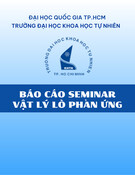



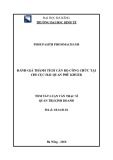
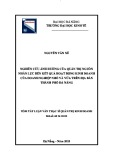
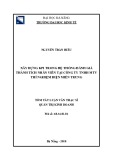

![Cộng hưởng từ định lượng tiền liệt tuyến: Báo cáo [Thông tin chi tiết]](https://cdn.tailieu.vn/images/document/thumbnail/2024/20240705/sanhobien01/135x160/1022040396.jpg)
